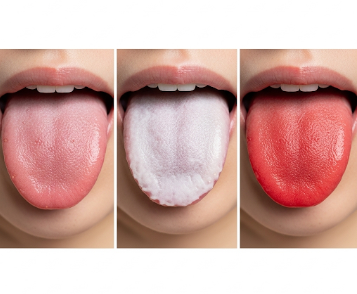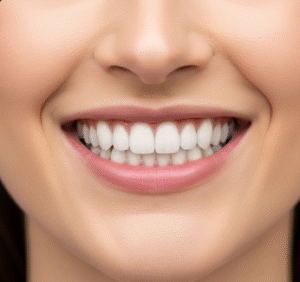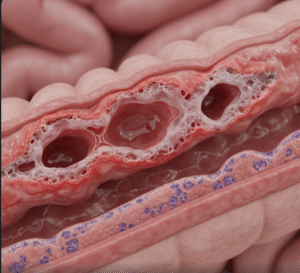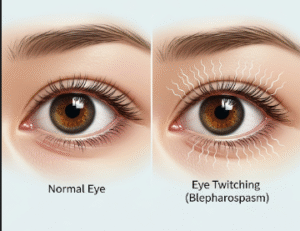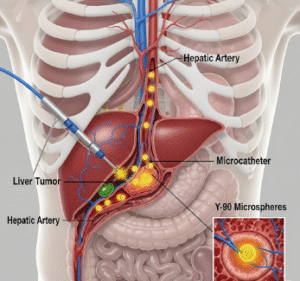➤ Overview
Tongue color is an important indicator of overall health and can reveal clues about nutrition, hydration, oral hygiene, or systemic diseases. Variations in color, coating, or texture may signal minor oral issues or serious medical conditions, including infections, liver or kidney problems, and blood disorders.
In South Korea, assessment of tongue color is commonly performed by dentists, ENT specialists, and traditional Korean medicine practitioners. Modern clinics combine visual examination, laboratory testing, and imaging to identify underlying causes and provide targeted treatment. Understanding tongue color can help in early detection and preventive care.
➤ Key Facts
→ A healthy tongue is typically pink with a thin white coating.
→ Red, white, yellow, purple, or black discoloration may indicate underlying health issues.
→ Tongue changes can reflect systemic diseases, nutritional deficiencies, infections, or dehydration.
→ In Korea, both conventional and traditional diagnostic methods are used to evaluate tongue changes.
→ Persistent discoloration or changes in texture require medical attention.
→ Tongue color may also be influenced by medications, lifestyle, and smoking habits.
→ Early recognition can improve treatment outcomes and overall oral and systemic health.
➤ What is Tongue Color?
Tongue color refers to the visual appearance of the tongue’s surface, including:
→ Base color – Normal, pale, red, purple, or blue.
→ Coating – White, yellow, gray, or black patches.
→ Moisture level – Dry, cracked, or overly moist.
→ Texture – Smooth, rough, swollen, or with fissures.
→ Shape changes – Swelling or atrophy can alter color perception.
→ Location-specific changes – Tip, sides, or back of the tongue may reflect different organ or systemic conditions in traditional Korean medicine.
Evaluation of tongue color is part of routine physical examinations in Korea and can guide further laboratory or imaging investigations.
➤ What Symptoms are Related to Tongue Color?
Changes in tongue color may be associated with other oral and systemic symptoms:
→ Pain or burning → May indicate infection or nutritional deficiency.
→ Swelling or enlargement → Linked to vitamin deficiencies or thyroid disorders.
→ Coating changes → Thick white coating may indicate oral thrush; yellow coating may suggest liver issues.
→ Bleeding or sores → Ulcers or trauma can affect color and texture.
→ Dryness or cracking → May indicate dehydration or autoimmune conditions.
→ Bad breath (halitosis) → Often accompanies bacterial overgrowth causing discoloration.
→ Numbness or tingling → Could be associated with vitamin B12 deficiency or neuropathy.
→ Systemic symptoms → Fatigue, jaundice, or fever may correlate with tongue color changes.
➤ What Causes / Possible Causes?
Tongue color changes may result from local, systemic, or external factors:
→ Nutritional deficiencies – Iron, vitamin B12, folate, or zinc deficiency.
→ Infections – Bacterial, fungal (Candida), or viral infections.
→ Liver or kidney disease – Can cause yellow or pale discoloration.
→ Blood disorders – Anemia or polycythemia affecting tongue hue.
→ Dehydration – Leads to pale or dry tongue.
→ Smoking or tobacco use – May cause black or brown discoloration.
→ Medications – Antibiotics or certain chemotherapies can affect tongue color.
→ Allergies or irritation – Food, dental products, or chemical irritants.
→ Autoimmune conditions – Sjögren’s syndrome or lupus may alter tongue appearance.
→ Hormonal changes – Pregnancy, thyroid disorders, or systemic endocrine issues.
➤ When Should I See My Doctor?
Medical evaluation is necessary if tongue color changes are:
→ Persistent for more than two weeks.
→ Accompanied by pain, swelling, or sores.
→ Associated with bleeding, pus, or unusual coating.
→ Linked to systemic symptoms – Fatigue, jaundice, fever, or unexplained weight loss.
→ Rapidly progressing or spreading discoloration.
→ In Korea, ENT specialists, dentists, and internal medicine doctors provide comprehensive assessment and laboratory testing.
➤ Care and Treatment
Management of tongue color changes depends on identifying and addressing the underlying cause:
→ Nutritional supplementation – Iron, vitamin B12, folate, or zinc if deficiencies are detected.
→ Oral hygiene optimization – Regular brushing, tongue scraping, and antimicrobial rinses.
→ Treatment of infections – Antifungal, antibacterial, or antiviral therapy as appropriate.
→ Hydration and lifestyle modification – Increase water intake, reduce smoking and alcohol.
→ Medication review – Adjust drugs that may contribute to discoloration under medical supervision.
→ Management of systemic disease – Liver, kidney, thyroid, or autoimmune conditions treated according to guidelines.
→ Symptomatic relief – Topical treatments for irritation, soreness, or burning sensations.
→ Regular monitoring – Follow-up to assess improvement or progression of tongue color changes.
➤ Treatment Options in Korea
South Korea provides comprehensive diagnostic and treatment options for tongue color abnormalities:
Diagnosis in Korea
→ Visual and clinical examination – ENT specialists and dentists evaluate tongue appearance.
→ Laboratory tests – Blood counts, vitamin levels, liver and kidney function tests.
→ Microbiological tests – Identify bacterial or fungal infections.
→ Imaging studies – If systemic disease or mass is suspected.
→ Traditional Korean medicine assessment – Tongue analysis used to complement modern diagnostics.
Medical Treatments in Korea
→ Nutritional therapy – Correct deficiencies with diet or supplementation.
→ Medication for infections – Targeted antifungals or antibiotics.
→ Systemic disease management – Treatment of liver, kidney, or blood disorders affecting tongue color.
→ Lifestyle counseling – Smoking cessation, improved oral hygiene, and hydration strategies.
Advanced Therapies in Korea
→ Laser or topical treatments – For persistent oral lesions or discoloration.
→ Specialist multidisciplinary care – ENT, internal medicine, dermatology, and dentistry collaboration for complex cases.
→ Patient education programs – Awareness of oral health, nutrition, and early warning signs.
Rehabilitation & Support in Korea
→ Guidance for maintaining oral health and preventing recurrence.
→ Follow-up monitoring for systemic disease progression.
→ Support for dietary and lifestyle adjustments to maintain tongue and overall health.

